29.04.2018
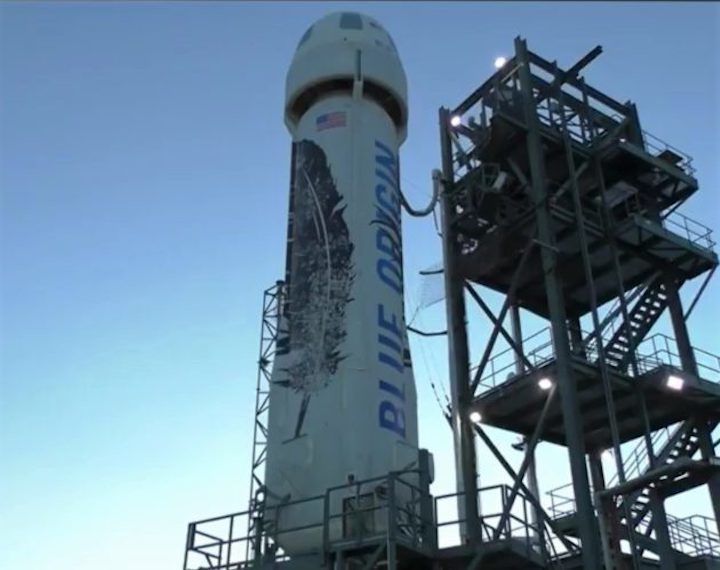
Amazon billionaire Jeff Bezos says his Blue Origin space venture is targeting the next test flight of its New Shepard suborbital spaceship for Sunday morning.
Like the seven previous test flights, this one will take place at Blue Origin’s spaceport in West Texas. “Shine up your boots, Team Blue,” the company said in a follow-up tweet.
If this launch follows the playbook for past outings, a reusable booster will send an uncrewed capsule up, up and away. After separation, the booster will descend and fire its rocket to touch down on its landing legs, while the capsule will float down on the end of a parachute.
The most recent test came last December, when Blue Origin tested a capsule that had actual windows in it for the first time. Bezos reported afterward that a test dummy nicknamed “Mannequin Skywalker” had a great ride. Mannequin Skywalker is due to make an appearance in Sunday’s sequel as well:
Scientific payloads have flown on past launches, and will fly on this one as well. But so far, no people have climbed aboard. Last week, Blue Origin CEO Bob Smith told GeekWire that he and his team are aiming to start flying test astronauts by the end of the year.
Paying passengers would eventually follow, riding the rocket to the edge of space — higher than 100 kilometers, or 62 miles — and experiencing a few minutes of weightlessness in the process. Blue Origin hasn’t yet set a timetable, or a price tag, for those commercial flights.
Blue Origin is also moving ahead with a separate orbital launch program that will make use of a more powerful but yet-to-be-built rocket known as New Glenn.
The Federal Aviation Administration issued an advisory about potential Blue Origin launch activities this week, but it’s not clear whether or not the company took advantage of that opportunity to conduct preparatory tests.
It’s already been quite a week for Bezos, thanks to amazingly positive first-quarter financial results for Amazon, the other company he founded. But Blue Origin has the potential to be even bigger than Amazon. Bezos often says he’d like to see millions of people living and working in space — a scenario that’s aimed at shifting heavy industry off the planet and preserving Earth for “residential and light industrial” zoning.
Last year, Bezos said that he sells a billion dollars’ worth of Amazon stock annuallyto back Blue Origin. And this week, during a visit to Berlin to pick up a business innovation award from Axel Springer, Bezos said Blue Origin is “the most important thing I’m doing.”
Update for 8:15 p.m. PT April 28: We’ve added Blue Origin’s follow-up tweets about Sunday’s test launch.
Quelle: GeekWire
+++
LIVE-Launch: 18.55 MESZ
.
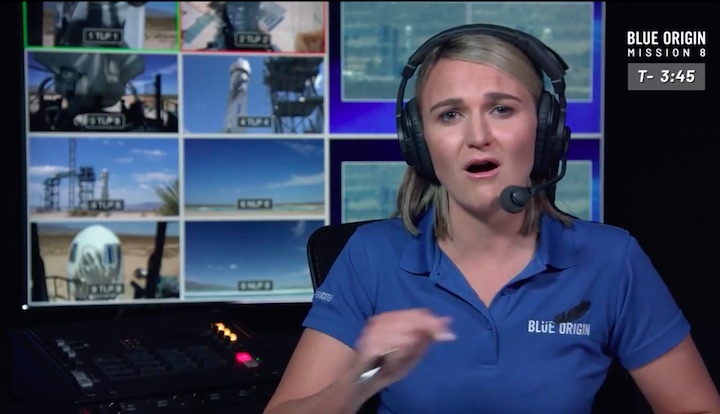
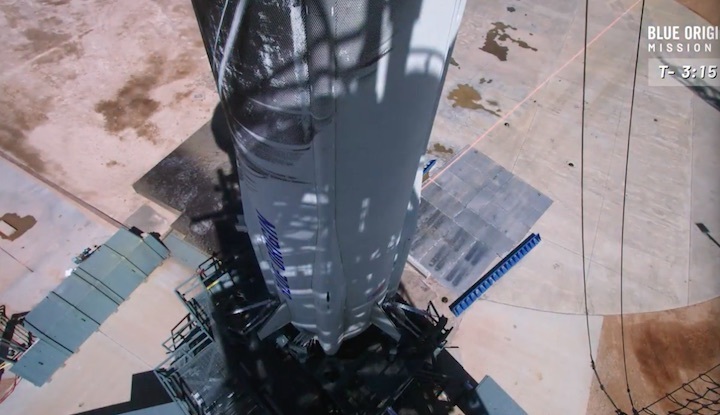
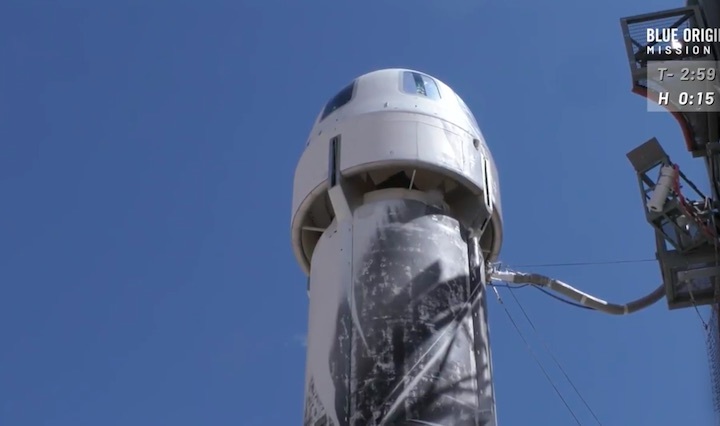
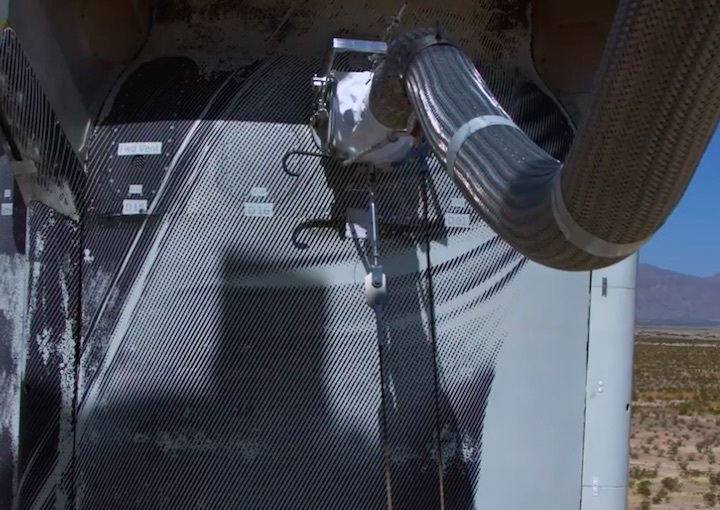
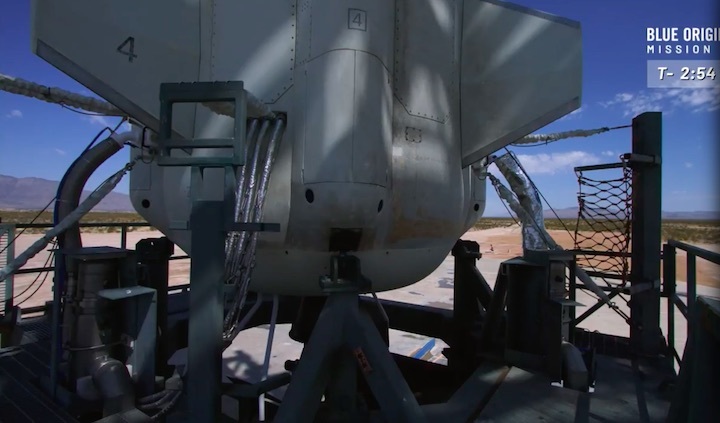
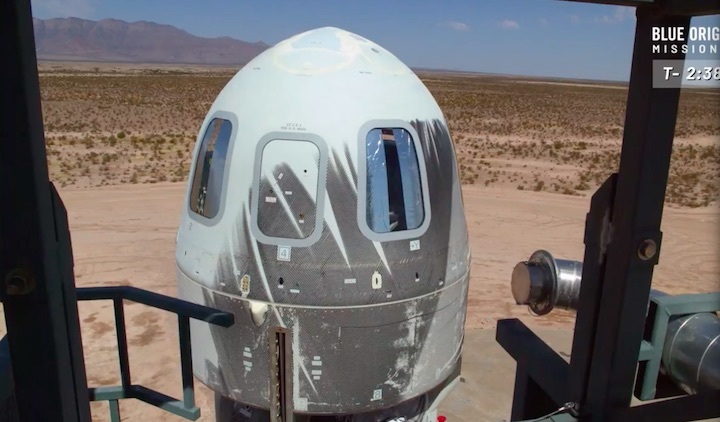
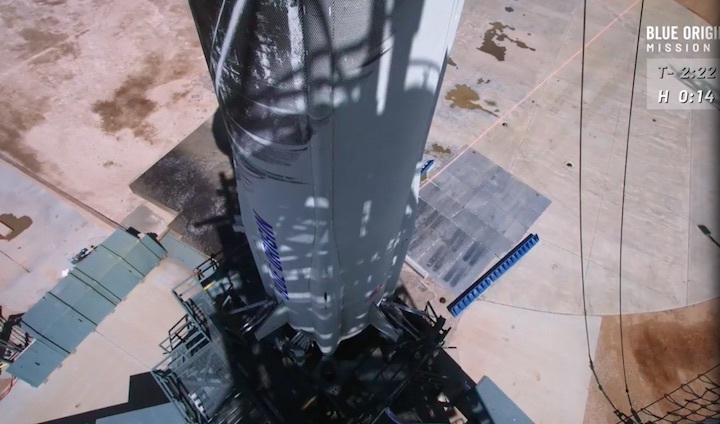
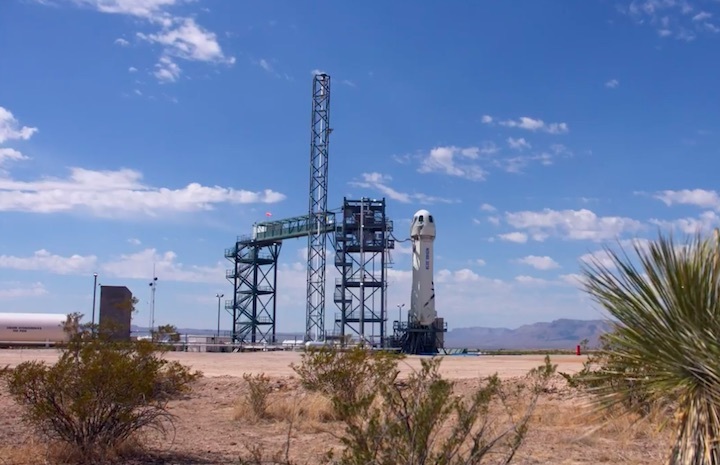
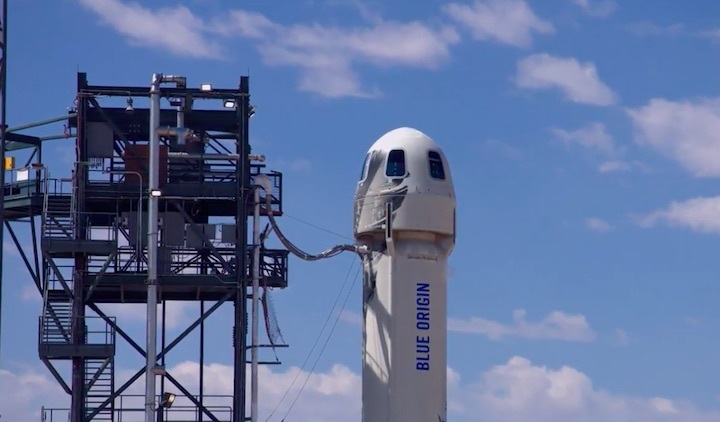
+++
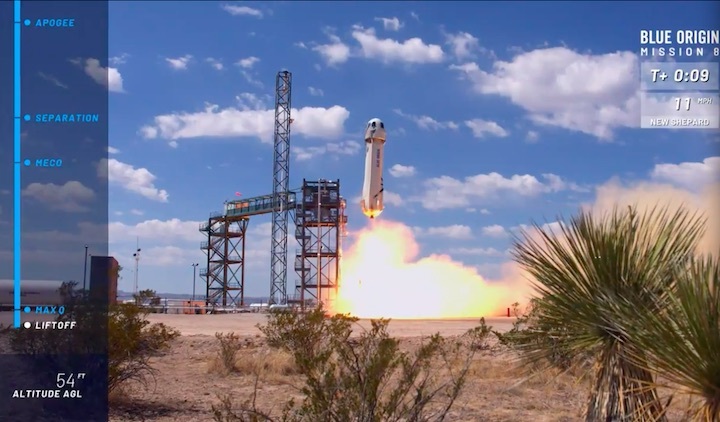
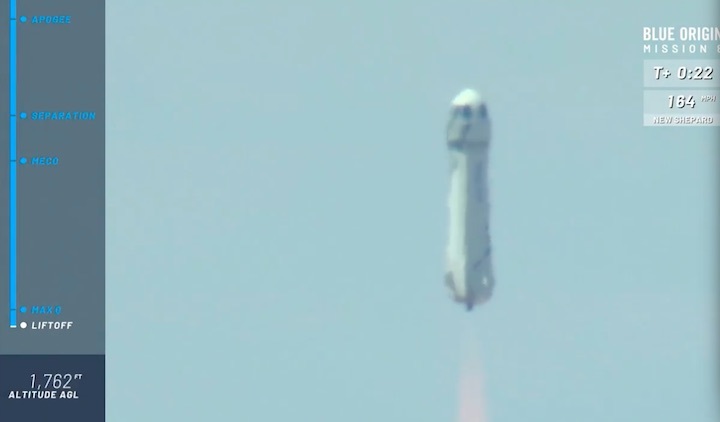
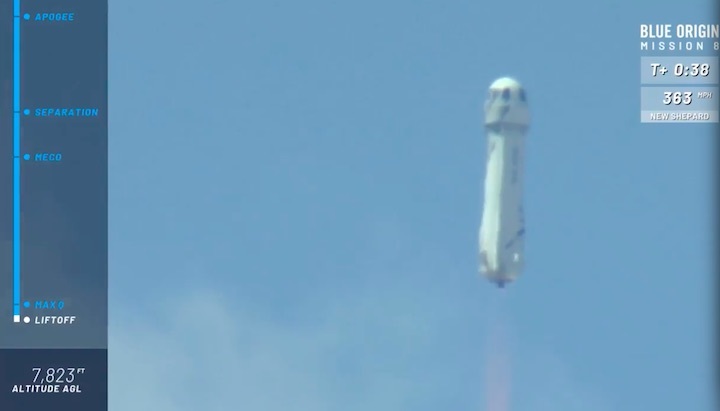
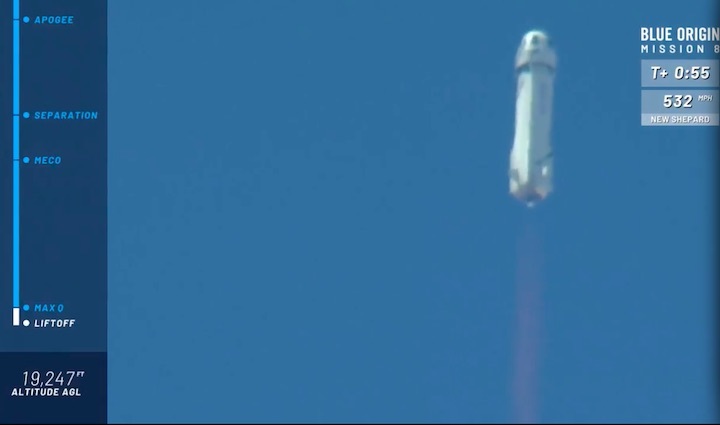
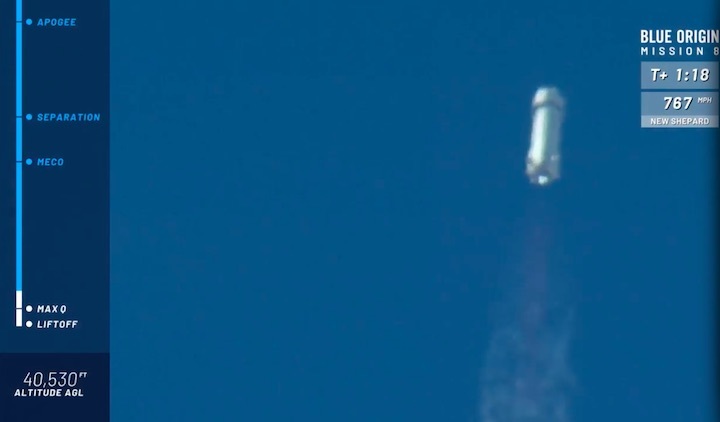
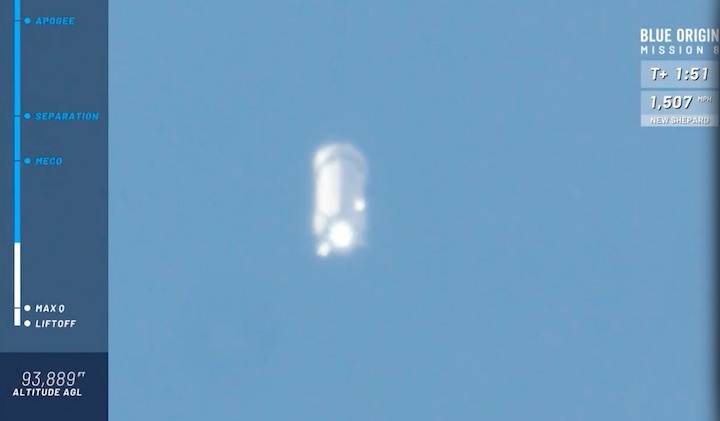
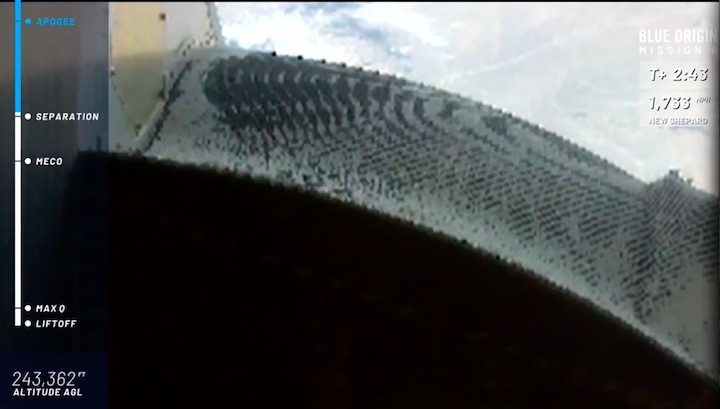
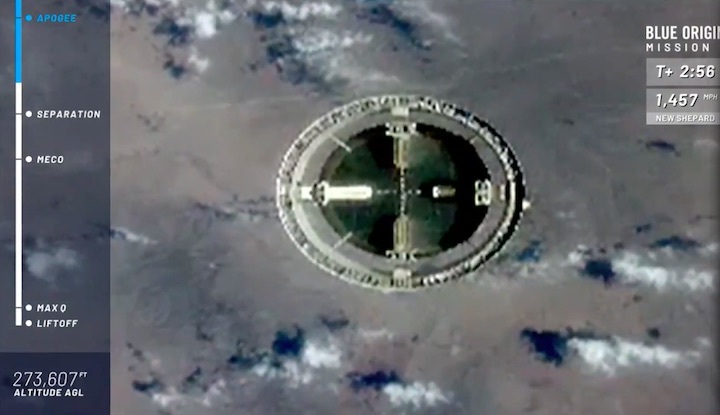
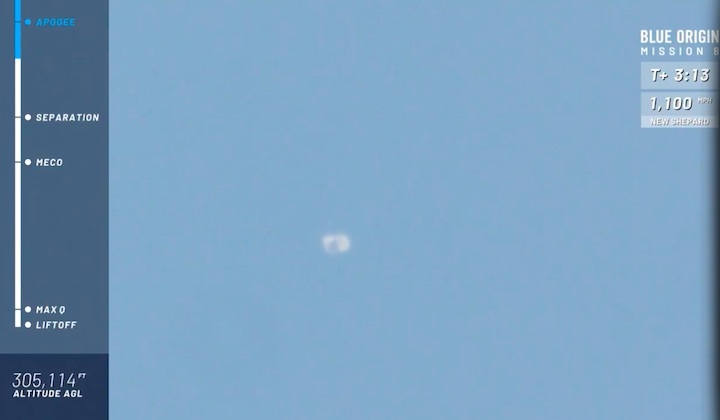
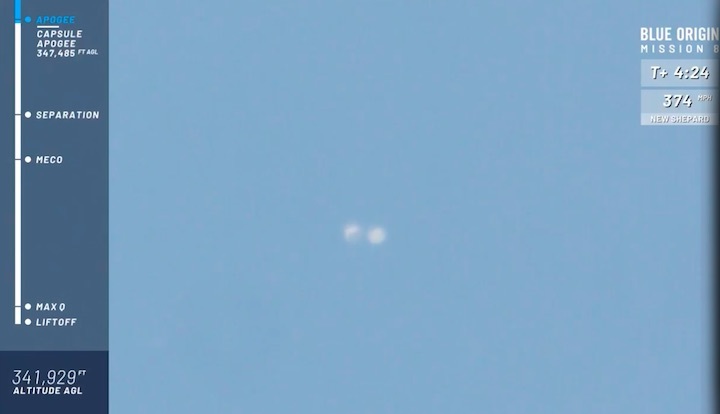
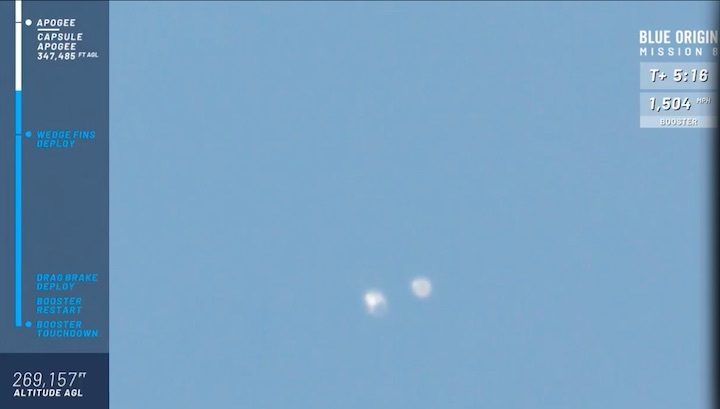
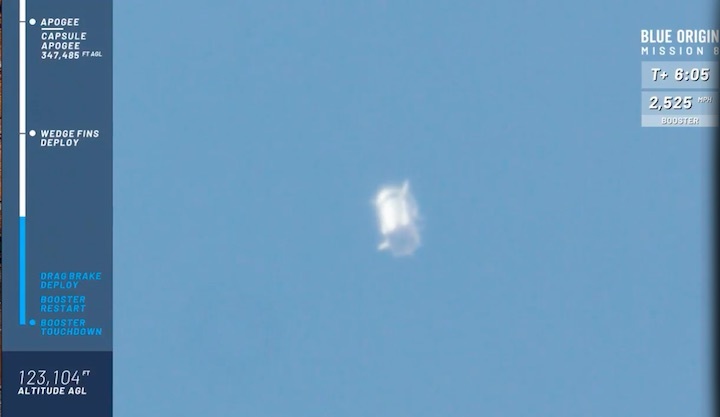
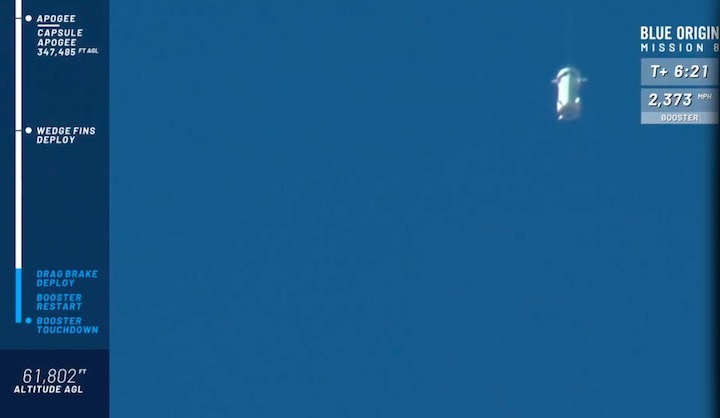
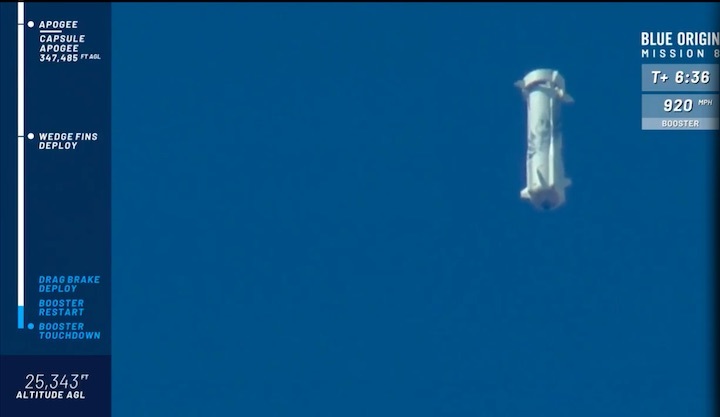
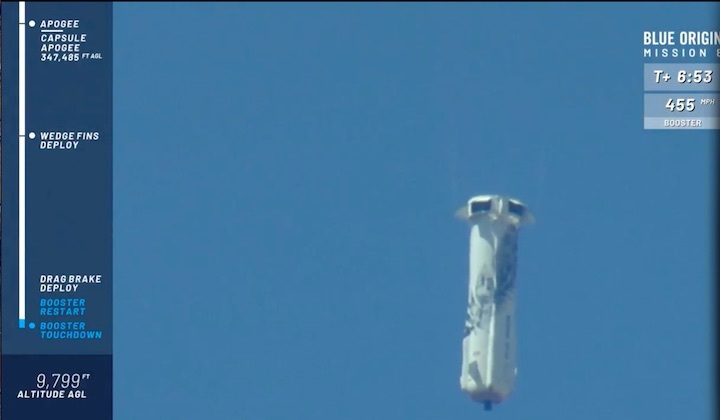
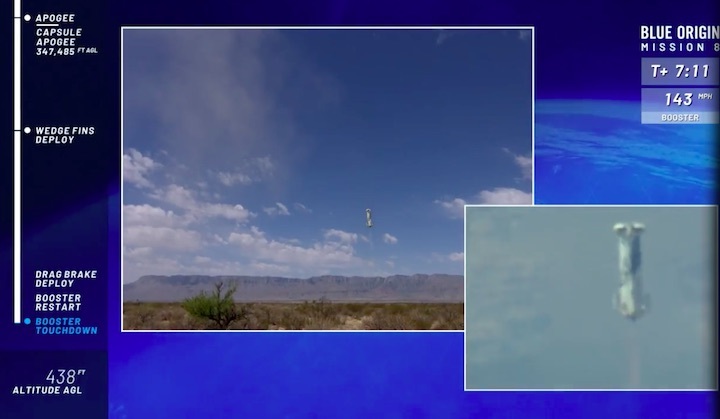
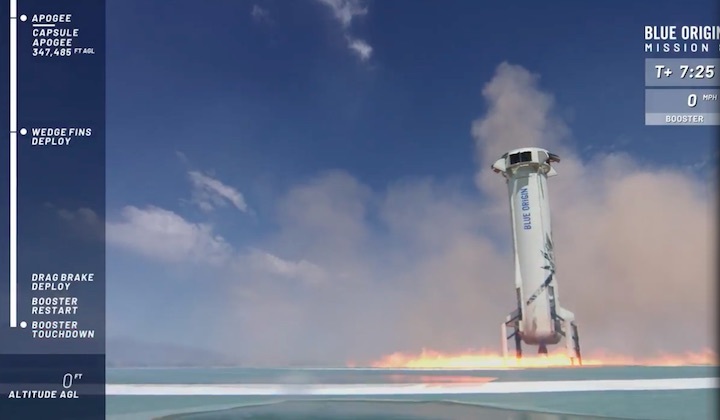
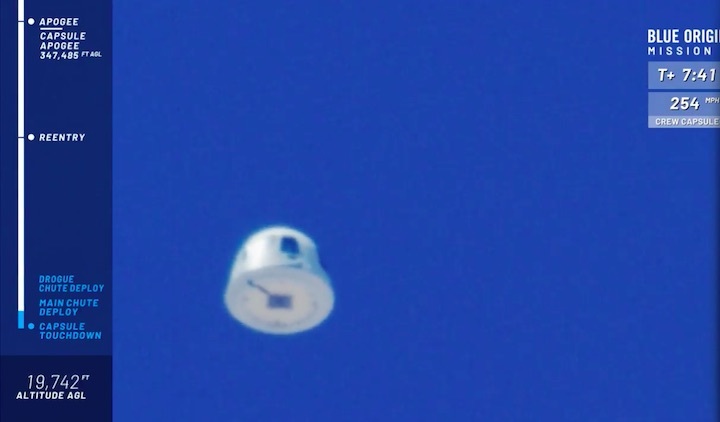
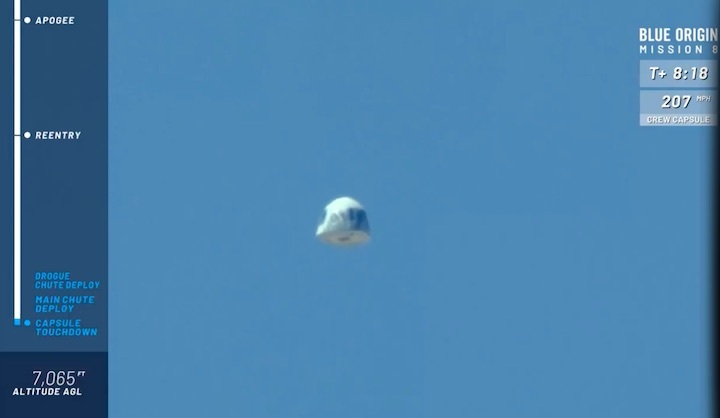
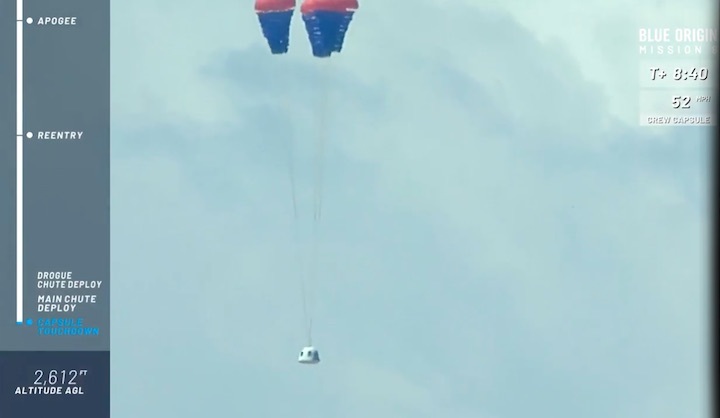
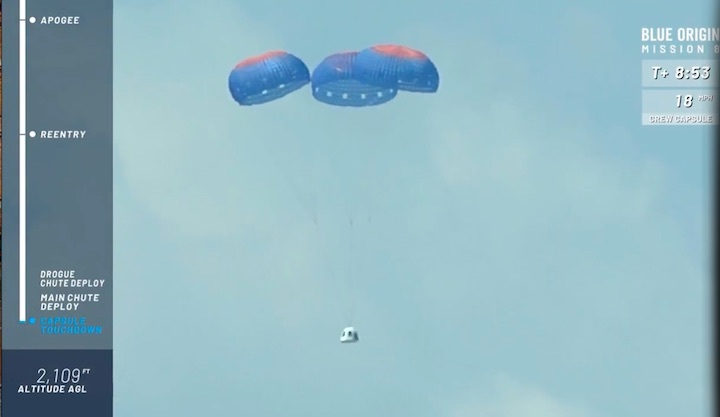
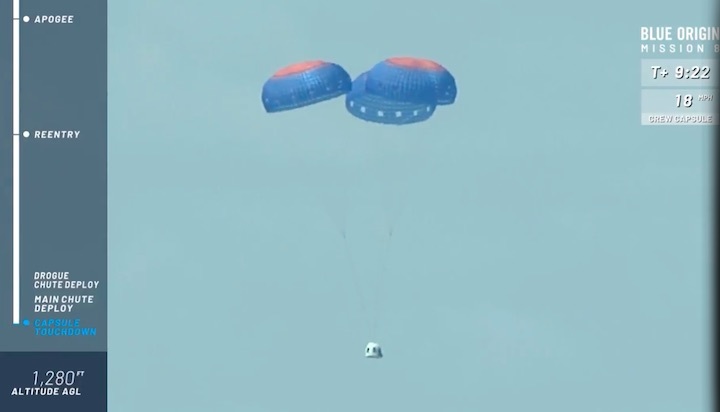
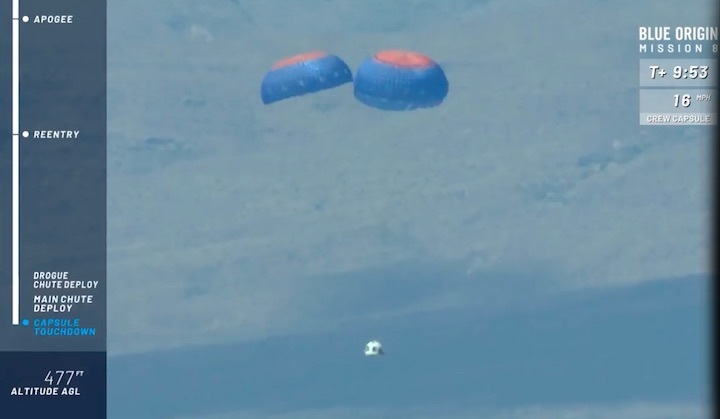
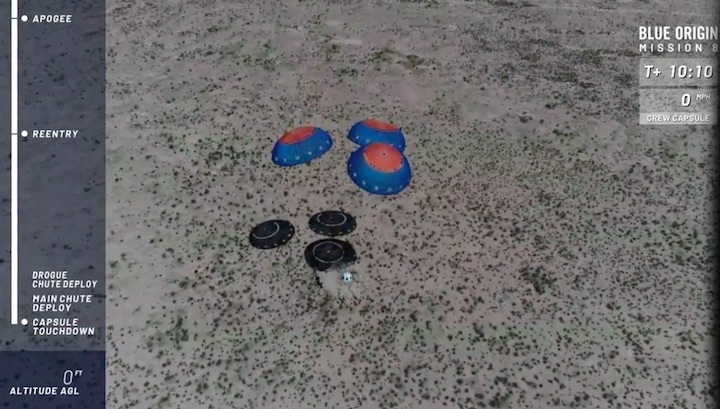
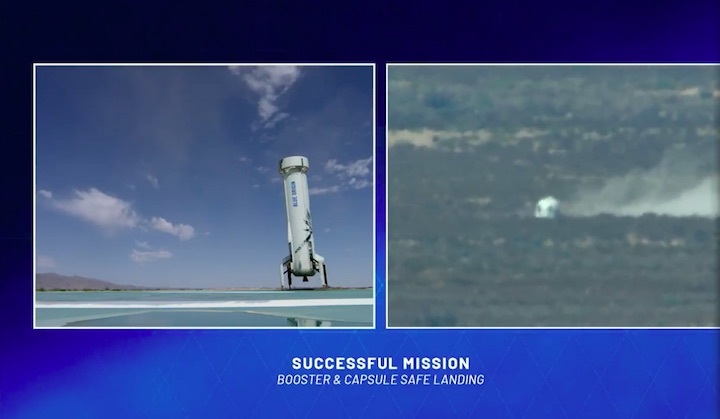
Quelle: Blue Origin
+++
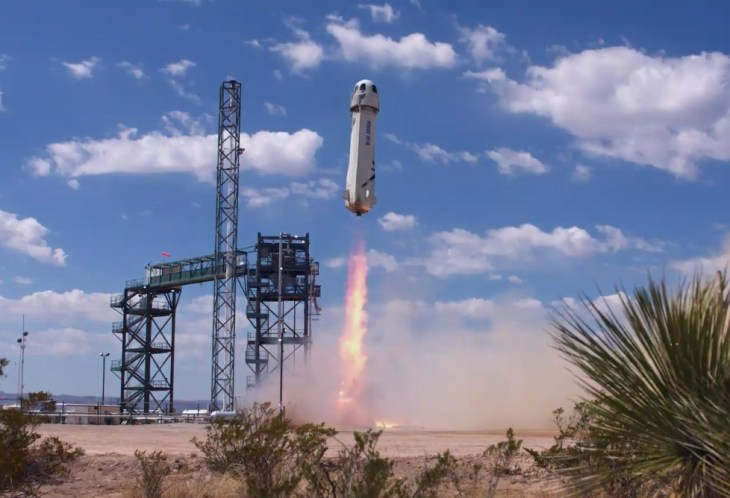
Blue Origin conducted the 8th launch of its New Shepard sub-orbital rocket and crew capsule today out in Texas, and things couldn’t have gone better for the growing space tourism company. The rocket ascended into a cloudless sky, reaching a max velocity of about 2,200 MPH, and delivered its capsule to the edge of space, where its occupant, “Mannquin Skywalker,” will have had a lovely view of the Earth.
New Shepard isn’t meant to deliver things into orbit, of course; Blue Origin has a different purpose and technology from the likes of SpaceX, focusing on giving people a quick, safe lift into space followed by a period of weightlessness and a pleasant descent.
That’s what was demonstrated today, and you can watch the whole thing live in the video below — the pre-launch coverage starts about half an hour in, and liftoff is at the 1h10m mark.
Everything went smoothly from liftoff to touchdown. I love watching the altitude graph filling in slowly at first, then blasting upward as the rocket gradually accelerates. After main-engine cutoff, which occurs just after crossing the Karmann Line, which indicates you’ve entered space, and anyone inside would experience weightlessness for about a minute and a half as the capsule slows down. Apogee for this flight was 347,000 feet, or about 106,000 meters.
While Mannequin Skywalker was enjoying microgravity, the booster was returning to Earth at high speed — over 2,600 MPH. The drag brake deploys around 100,000 feet up, reducing speed to a more manageable 370 MPH before the booster re-ignites at 2,500 feet and brings itself down to a hover landing.
This is one of the most obvious differences to a viewer between New Shepard’s booster and the Falcon 9s; New Shepard has more control over its thrust, allowing for a highly controlled landing where it could even float for a bit if necessary. The larger Falcon 9 has to land using much more powerful thrust, meaning if they aren’t careful, they might just take off again. It’s kind of like the difference between having to let up on the gas to ease into a parking spot, and having to pull the e-brake at precisely the right moment.
Meanwhile the capsule, with its higher apogee and greater drag, has been falling down this whole time, waiting for the right time to deploy its parachutes. It didn’t happen until below the 7,000-foot mark, making me sweat a bit. It wouldn’t be a good look to have your crew capsule impact at 240 MPH.
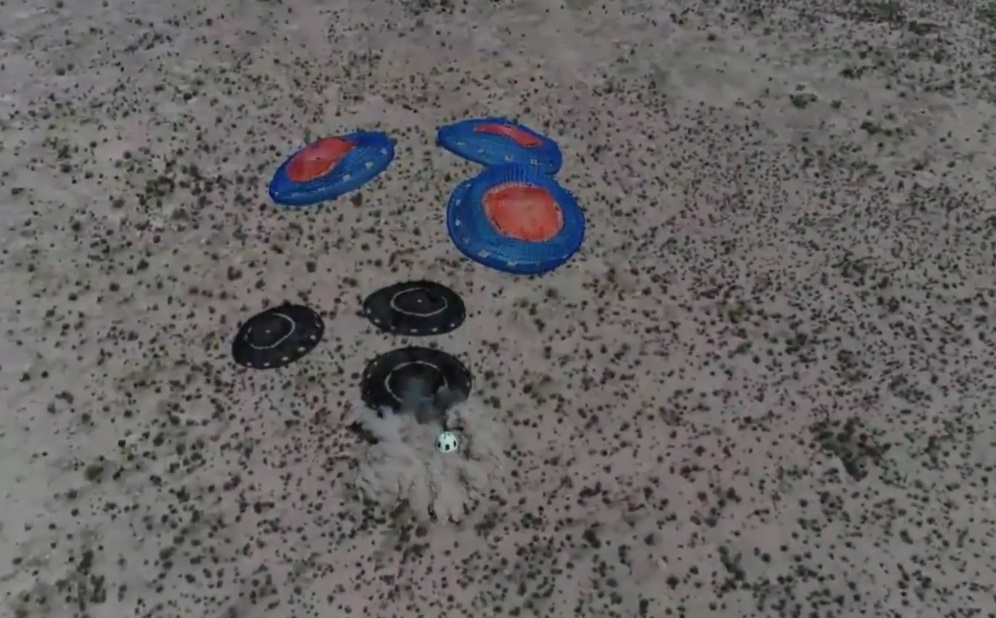 The commentator describes the capsule touchdown a minute or two later as a “beautiful soft landing,” though honestly it looks like it would give anyone inside something of a jolt. Let’s hope the seats are comfortable in that thing.
The commentator describes the capsule touchdown a minute or two later as a “beautiful soft landing,” though honestly it looks like it would give anyone inside something of a jolt. Let’s hope the seats are comfortable in that thing.
Quelle: TC

